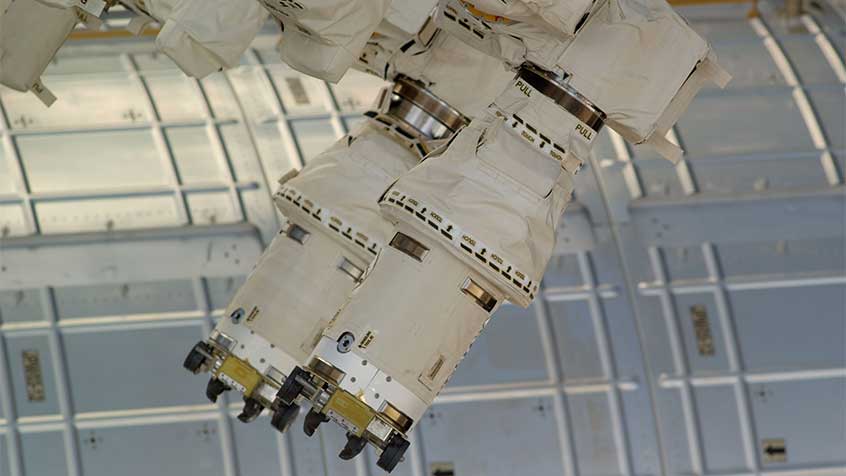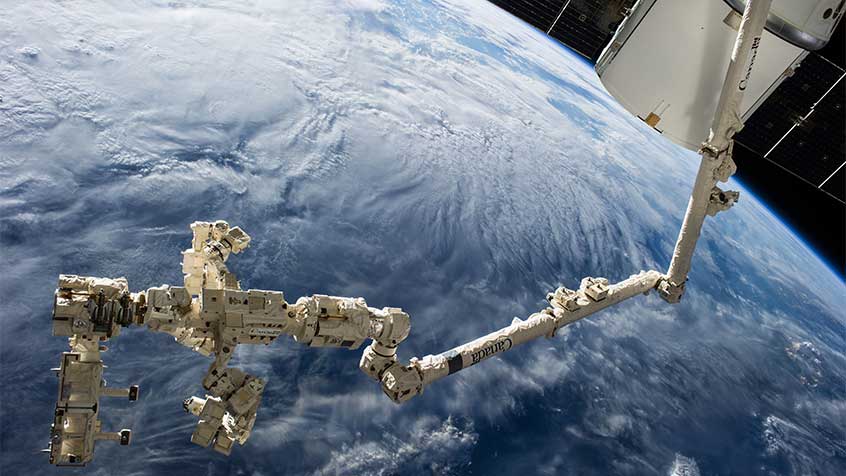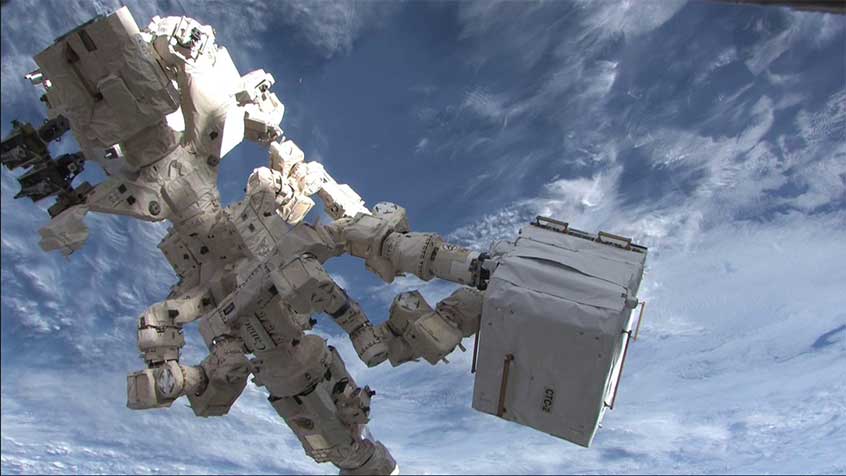About Dextre
Dextre is a versatile robot that maintains the International Space Station (ISS). Part of Canada's contribution to the Station, it is the most sophisticated space robot ever built.
Dextre's tasks
Dextre tackles the tough or routine jobs that need to be done in the harsh environment of space. The Station's versatile robot allows astronauts to spend more time doing scientific experiments instead of going on risky spacewalks.
Dextre can:
- install and replace small equipment, like exterior cameras or the 100-kg batteries used on the Space Station
- replace defective components in the Station's electrical system
- test new tools and robotics techniques including some that could enable us to one day service satellites in space
This computer-generated simulation shows Dextre's battery replacement operations on the ISS. (Credit: Canadian Space Agency [CSA])
Canada's contribution to the ISS consists of cutting-edge robots Canadarm2 and Dextre, and the Mobile Base System, a transport and storage platform.
All three elements are essential for many maintenance tasks and regular operations.
How Dextre works
Dextre's body was designed to move in many different ways.
Each of its arms has seven joints that can move up and down, go from side to side, and rotate. This large range of motion means Dextre can actually carry out more complex movements than a human arm.
The robot has a human-like sense of touch! Its hands work like Swiss Army knives. Each hand has:
- a retractable motorized wrench
- a camera and lights for close-up viewing
- a retractable connector to provide power, data and video connection
The robot can carefully grip delicate equipment without causing damage. Although Dextre is strong enough to work with refrigerator-sized gear, it can also handle pieces as small as a toaster. In fact, Dextre's work can even be precise down to a few millimetres. During a mission to refuel a simulated satellite, the robot successfully manipulated small safety caps, cables and wires with minute precision—all while being controlled from Earth, hundreds of kilometres away.
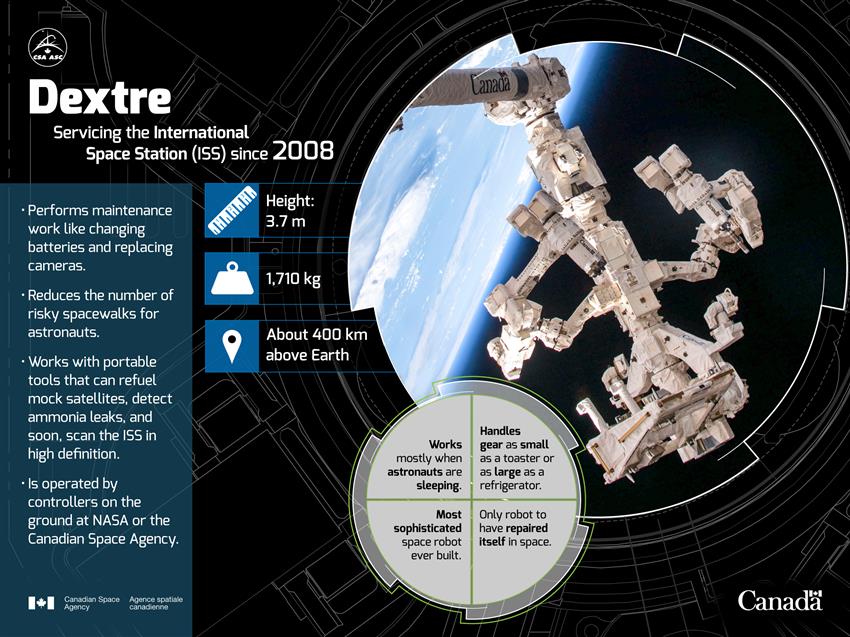
Servicing the ISS since - Text version
Quick facts on Dextre, the ISS's versatile robot. (Credit: CSA)
How Dextre moves on the Station
This multi-talented robot can ride on the end of Canadarm2 to move from worksite to worksite, or be ferried on the Mobile Base System. Dextre can work almost anywhere on the ISS.
Smell that? Dextre's attachable "nose" sniffs out leaks of ammonia, a gas used in the Space Station's cooling system. Early detection of small leaks can help the ISS crew avoid unplanned spacewalks.
Special features
For eyes, Dextre has five cameras, including one inside each hand. In , the CSA will equip the robot with Dextre Deployable Vision System, an enhanced vision system.
Dextre will use this portable tool to:
- regularly inspect the exterior surfaces of the Station
- find signs of damage as early as possible
- monitor the approach and departure of visiting resupply ships
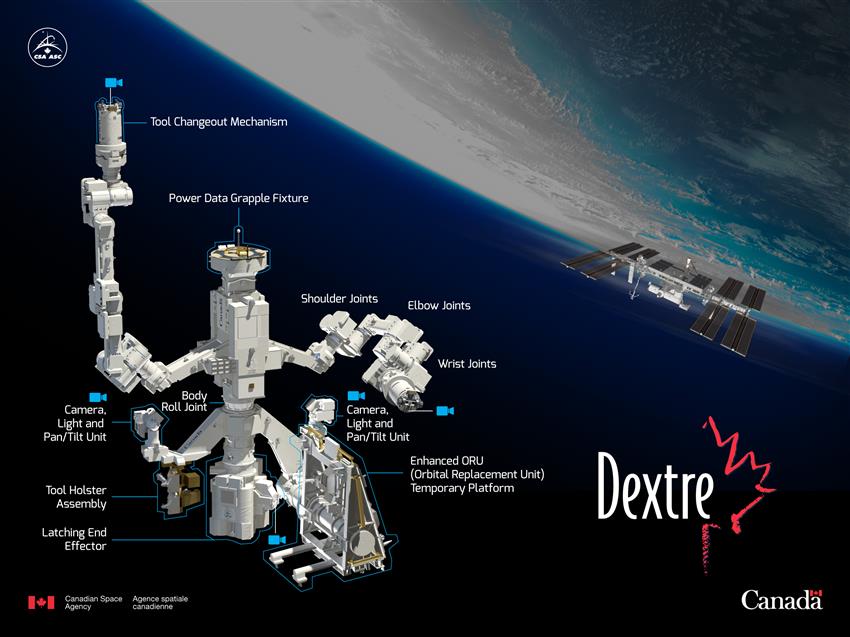
Dextre infographic: A closer look at the Canadian versatile robot - Text version
A piece-by-piece look at Dextre, the most sophisticated space robot ever built. (Credit: CSA)
Impacts on Earth
Canadian robots Canadarm2 and Dextre have led to the development of many technologies that benefit our lives here on the blue planet:
Who controls Dextre?
The robot is operated by ground control teams at CSA headquarters and NASA.
Who built Dextre?
Dextre was built by MacDonald, Dettwiler and Associates, based in Brampton, Ontario. The space robot was launched on board Space Shuttle Endeavour and installed on the ISS in 2008.


